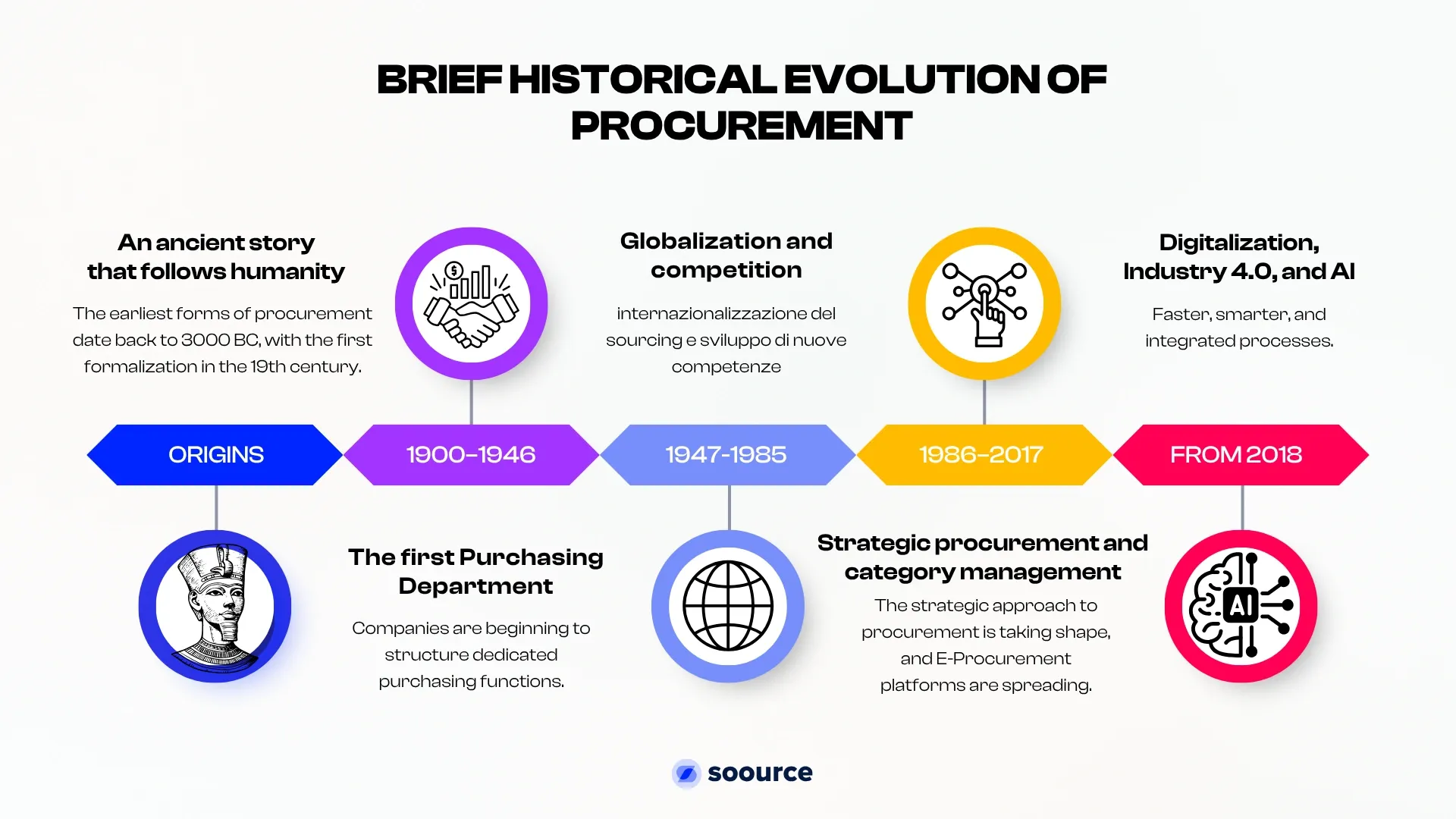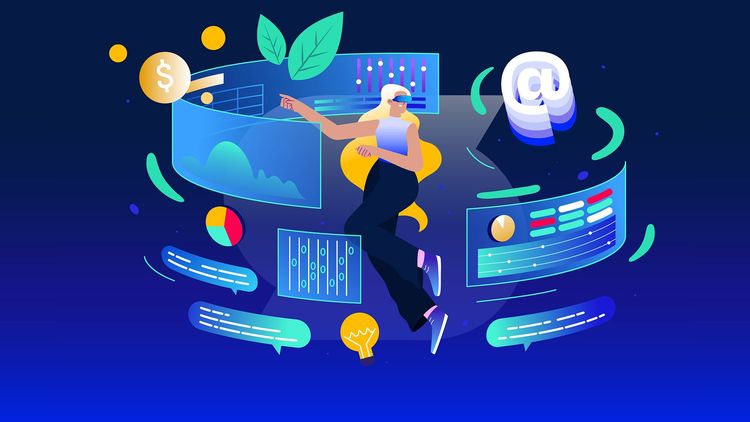The Digital Transformation of Procurement: What is E-Procurement?
4/2/2025
•8 MIN READ
In contemporary supply chains that are increasingly dynamic and global, procurement is undergoing a significant transformation driven by advanced digital technologies.
Among these innovations, digital procurement (or e-procurement) has become a pivotal asset for optimizing sourcing, procurement and purchasing processes, improving visibility across suppliers and accelerating decision-making for buyers and CPOs.
Modern procuretech solutions are redefining operational models, reducing inefficiencies and enabling companies to adopt data-driven acquisition strategies.
What Is E-Procurement?
E-procurement refers to the entire cycle of digitised procurement, from supplier identification and evaluation, through the issuance and management of purchase orders, billing and payments. Transactions in the B2B space are managed via online platforms integrated with ERP systems, EDI frameworks and collaborative tools that automate many manual tasks historically performed by procurement departments.
Key functionalities of e-procurement include:
- Electronic tendering and digital auctions
- Automated purchase order generation
- Digital supplier catalogs
- Electronic invoicing and approval workflows
- Real-time tracking and visibility across the supply chain
By leveraging these tools, organisations can streamline their procurement, achieve greater transparency and reduce cycle times.
A Brief Historical Evolution of Procurement
To fully understand the impact of e-procurement and new sourcing models, it is helpful to reflect on how procurement has evolved over the centuries.

Origins to 1900
The earliest documented procurement activities date back to circa 3000 BCE, when Egyptian scribes managed materials and labour for pyramid construction. While rudimentary, these processes laid a foundation for structured supply-practices.
1900–1946: The Rise of Purchasing Functions
With industrialisation, specialised purchasing departments began to appear. Procurement gradually assumed a more strategic role as scientific management and mass production took hold.
1947–1985: Globalisation, Sourcing and Competition
In the post-war period, purchasing functions gained traction as companies tapped international suppliers. Buyers had to confront issues such as currency fluctuations, contract law, price trends and supplier quality.
1986–2017: Strategic Sourcing, Category Management and Digital Foundations
Procurement evolved beyond transactional tasks into strategic supply. The concept of category management emerged around 2005, emphasising spend-category optimisation. The advent of the Internet and ERP systems marked the beginning of modern e-procurement.
From 2018 Onwards: Digital Procurement and AI Integration
Today, e-procurement digitalises the core processes of sourcing, ordering, invoicing and payment.
Industry 4.0 technologies enable real-time connectivity with suppliers, while AI plays a key role in procurement with applications including:
- Risk management: predicting supply-chain disruptions proactively
- Supplier qualification: analysing supplier performance and compliance
- Sourcing intelligence: optimising procurement strategies based on market data
- Process automation: freeing procurement professionals from routine tasks
Predictive analytics refine demand forecasting and cost control; AI-driven chatbots assist procurement teams with queries, approvals and supplier suggestions. Looking ahead, autonomous workflows may become a reality for the procurement function.
How AI Is Redefining E-Procurement and Sourcing
Cutting-edge procuretech platforms are equipping buyers and CPOs with advanced capabilities:
Risk Management & Resilience
Machine learning models process large volumes of data to identify potential supply-chain vulnerabilities, thereby strengthening organisational resilience.
Supplier Qualification & Performance
AI-based tools evaluate suppliers on multiple dimensions—quality, compliance, capacity—and score them for strategic sourcing.
Optimising Sourcing
Procuretech platforms provide buyer-oriented intelligence on market trends, cost benchmarks and supply alternatives, enhancing sourcing decisions.
Operational Automation
Routine procurement tasks are executed automatically—emails, RFIs/RFQs, data entry—allowing procurement teams to focus on strategy.
Practical Example
| Process | Traditional State | With e-procurement + AI |
|---|---|---|
| Supplier research | Manual, slow | Automated, complete mapping |
| RFQ management | High operational intensity | Digital workflows and automatic analysis |
| Offer evaluation | Outdated Excel sheets | Smart dashboard with dynamic scores |
| Cost control | Reactive | Predictive and proactive |
| Transparency | Limited | End-to-end with complete traceability |
E-Procurement & Procuretech Solutions: The Role of Soource
Innovative platforms like Soource exemplify how AI-driven solutions can transform procurement. The software enables full mapping of potential suppliers and automates large-scale data collection via artificial intelligence, email automation and quantitative quotation gathering.
Benefits for buyers and CPOs include:
- Significant reduction of time-to-source
- Improved accuracy in supplier evaluation
- Access to current market data in real time
- Cost savings through rapid comparisons and transparency
The Future of E-Procurement
The procurement function is evolving into an autonomous, strategic corporate contributor, characterised by:
- Integration of AI with blockchain for enhanced traceability and trust
- End-to-end workflow automation in procurement
- Predictive systems for demand planning and inventory optimisation
- Intelligent orchestration of supply-chain activities
In this scenario, the purchasing function becomes a strategic ally to the enterprise, supporting resilience, sustainability and competitive advantage.
E-procurement is essential for modern organisations seeking to optimise sourcing, procurement and purchasing. Digitisation and artificial intelligence enable higher transparency, operational efficiency and strategic decision-making.
Businesses that adopt advanced procuretech solutions are better positioned to reduce costs and risks while elevating supply-chain value.
For buyers and CPOs, the future lies in integrating AI-enabled workflows and embracing procurement as a strategic engine for growth.
If you're curious about how innovative procurement can benefit your business, book a demo to discover Soource.
Book a demo

8/8/2024
•4 MIN READ
Beyond Traditional Procurement Roles: Exploring Career Opportunities for Procurement Experts

12/8/2025
•5 MIN READ
Top Procurement Podcasts - Insights and Strategies for Professionals

24/7/2025
•5 MIN READ
Canada speeds up in the Arctic: new icebreakers, shorter trade routes, and global supply chain impact
FAQ
We have collected the most frequently asked questions here, but don't hesitate to contact us if you have any doubts or want to know more about Soource.
Is Soource compatible with my ERP (Enterprise Resource Planning or Procurement Suite)?
Yes, Soource is compatible with major ERP and procurement software like SAP Ariba, Jaggaer and other enterprise systems. You can integrate it for bidirectional data exchange or use it as a plug & play solution, without the need for integration.
Are my data on Soource protected and secure?
Absolutely. All corporate, personal and supplier data remains your property and is processed according to GDPR and European regulations. Generic data is anonymized to improve platform and Soource community performance.
Where does supplier data on Soource come from?
Soource's database combines:
- Certified and public sources
- Data collected from intelligent web crawling
- Information automatically extracted from corporate emails
Today Soource offers the largest database of Italian companies with direct email contact.
Can I attach files to RFI, RFQ or RFP on Soource?
Yes, you can attach documents in any format to your requests (RFI - Request for Information, RFQ - Request for Quotation or RFP - Request for Proposal). In particular, for RFIs, it is recommended to include a technical specification sheet of the product to get more detailed responses from suppliers.
Can I send follow-ups to suppliers with Soource?
Yes. With Soource you can filter suppliers who haven't responded and send a mass follow-up in one click. This helps you double the response rate, up to 80% on average, improving RFI, RFP and RFQ management.
Is Soource compliant with the European AI Act?
Yes. Soource's artificial intelligence is compliant with the European Union's new AI Act, falling into the zero-risk category, as it only supports internal activities and does not automate outward processes or critical decisions.
Why use Soource for RFI and RFP?
With Soource you can:
- Create RFI (Request for Information) and RFP (Request for Proposal) in just a few clicks
- Send them automatically to selected suppliers
- Analyze responses with artificial intelligence
- Extract and compare certifications, availability, technical capabilities
You save time and identify the best suppliers more quickly.
Can I also use Soource for RFQ?
Yes. Soource also supports RFQ (Request for Quotation) to request economic offers. The platform automates:
- RFQ sending
- Response reception and reading
- Comparison of prices and conditions